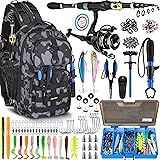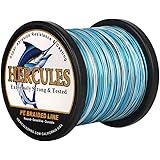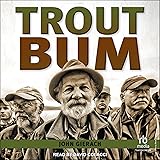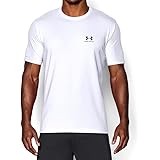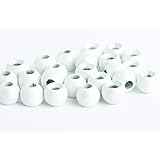Are you contemplating embarking on the exciting journey of recreational fishing but feel somewhat daunted by the initial gear selection? For individuals new to the pursuit, the process of acquiring the necessary equipment can often seem complex. The accompanying video offers an excellent primer on fundamental gear; however, a more granular understanding of each component is often beneficial. This comprehensive guide aims to expand upon those foundational insights, providing a deeper dive into selecting essential fishing gear for beginners, ensuring that one’s initial experiences on the water are both productive and enjoyable.
Establishing Your Core Fishing Gear for Beginners
The selection of appropriate gear is paramount for a successful introduction to angling. While countless options exist within the market, a pragmatic approach dictates focusing on versatile and user-friendly items. For new anglers, simplicity and reliability are often prioritized over specialized functionalities, thereby facilitating a smoother learning curve.
The Foundational Rod and Reel Combination
As was judiciously noted, a medium-action spinning rod and reel combo, typically within the 6 to 7-foot range, is frequently recommended for novice anglers. This specific configuration is selected for several critical reasons. The “medium action” designation indicates a rod that flexes primarily in its upper half, offering a commendable balance between casting distance and the ability to handle a variety of fish sizes without undue strain on the angler. Furthermore, a spinning reel is inherently easier to master for casting, minimizing backlashes and tangles that are common with other reel types. The benefit of a pre-assembled combo lies in its immediate readiness for use, obviating the need for separate component matching. Such combos are remarkably versatile, proving effective in both freshwater environments, such as ponds and lakes, and inshore saltwater scenarios, making them an excellent initial investment for those getting started in fishing.
Understanding Your Fishing Line
The fishing line serves as the crucial link between the angler and the fish, necessitating careful consideration. Many beginner rod and reel combos are conveniently pre-spooled with monofilament fishing line, which is an ideal starting point. Monofilament line is characterized by its stretch, which acts as a shock absorber during a fish’s fight, reducing the likelihood of hooks pulling free. It is also relatively inexpensive, highly visible, and easy to knot. Moreover, its buoyancy allows for effective surface bait presentation. For situations demanding enhanced durability, such as fishing near abrasive structures like dock pilings, rock formations, or bridge supports, the incorporation of a fluorocarbon leader is strongly advised. Fluorocarbon is known for its superior abrasion resistance and, crucially, its near invisibility underwater, making it a more discreet presentation to wary fish. The leader is typically tied to the end of the main monofilament line, providing a robust, low-profile connection to the bait or lure.
Assembling Your Basic Tackle Kit
The term “tackle” encompasses the various tools and accessories used at the business end of the fishing line. The specifics of one’s tackle selection are largely dictated by the target species and fishing environment. For instance, freshwater pond or lake shoreline fishing can be effectively undertaken with a minimalist approach. A simple J-hook, a few split shot weights, a bobber, and live bait such as earthworms constitute a highly effective and straightforward setup. J-hooks are versatile and easy to bait, while split shot weights help sink the bait to the desired depth. Bobbers, conversely, serve as visual strike indicators and keep bait suspended off the bottom. For anglers seeking to explore lure fishing, a small selection of versatile options is prudent. Soft plastic flukes, often retrieved with a twitching motion, mimic various baitfish and are effective in both fresh and saltwater. Similarly, a simple gold spoon, with its reflective flash and wobbling action, can attract a wide array of predatory fish species. These lures offer significant utility and are easily manipulated by beginner anglers.
Selecting an Efficient Tackle Box
A tackle box is more than a mere container; it is an organizational cornerstone that ensures essential items are protected and readily accessible. When selecting a tackle box, a mid-sized option is generally recommended. Such a size strikes a balance between portability and storage capacity. The inclusion of multiple trays and compartments is a critical feature, as it permits the methodical organization of hooks, weights, lures, and other small components, preventing tangles and simplifying item retrieval. Furthermore, adequate space should be reserved for a few essential fishing tools, ensuring they are always within reach when needed on the water. A well-organized tackle box directly contributes to a more efficient and enjoyable fishing experience.
Essential Hand Tools for Anglers
Beyond the primary fishing apparatus, a few basic hand tools are indispensable for safety and operational efficiency. A robust pair of fishing pliers is often considered the most crucial tool. Pliers serve multiple functions, including removing hooks from fish (a vital safety measure for both the angler and the fish), crimping split shot weights, and cutting stubborn fishing line. Moreover, a dedicated handheld fishing line-cutter tool, which can be a small pair of clippers or specialized scissors, ensures clean and precise cuts of various line types. This precision is essential for tying strong knots and preventing frayed lines, which can compromise line integrity. These tools, though seemingly minor, play a significant role in the practical aspects of fishing, especially for those learning the ropes of basic fishing gear for beginners.
The Imperative of a Fishing License
Before any casting takes place, the acquisition of a valid fishing license is an absolute prerequisite. Fishing regulations are implemented to manage fish populations, protect aquatic ecosystems, and ensure sustainable fishing practices. Consequently, a license is a legal requirement in virtually all jurisdictions. Licenses can typically be purchased with ease online through governmental wildlife or conservation websites, such as TakeMeFishing.org, or at local outdoor specialty retailers and tackle shops. Various types of licenses may be available, including annual, temporary, or specific area permits, so it is important to select the one appropriate for one’s intended fishing activities. Compliance with licensing requirements is a fundamental responsibility of every angler and contributes to the preservation of natural resources for future generations. Understanding these fundamentals of basic fishing gear for beginners is truly the first step toward a fulfilling angling adventure.


